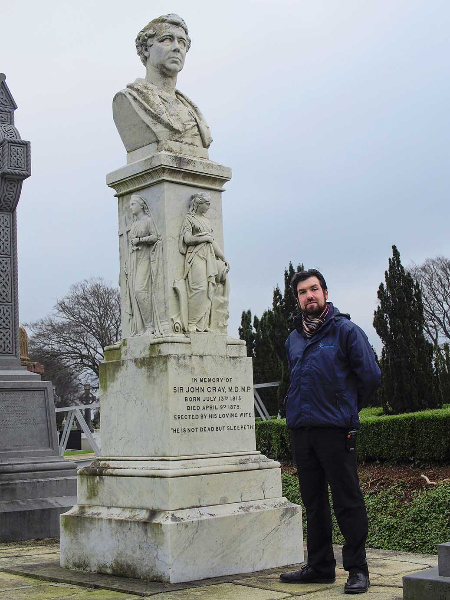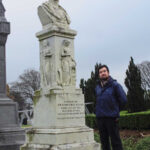Cemetery tour really is ‘Dead Interesting’
Dublin People 26 Feb 2017
GLASNEVIN Cemetery has launched a new ‘Dead Interesting’ tour that brings the forgotten stories of Ireland’s lesser-known characters back to life.

The 90-minute walk around the graves, architecture, stone carvings and nature of the historic site is aimed at both newcomers to Glasnevin and those who’ve been on the regular tour before.
However, it’s especially interesting to anybody who enjoys a good anecdote and has ever wandered past a row of graves wondering about the stories behind the names.
The ‘Dead Interesting’ tour was piloted on Saturdays and Sundays since January but is being extended to weekdays too from March 1.
The tour brings visitors from the museum and front gate to the very back of the cemetery, and a ticket includes a voucher for a genealogy search back at the museum.
You won’t visit the graves of the heroes of the fight for Irish independence, although they’re woven into the anecdotes of the real stars of the tour, the sometimes forgotten people who might not be buried under the most glamorous headstone or have contributed most to history books, but whose stories are dead interesting nonetheless.
Instead, visitors will hear about assassins and fighting priests, a very unlucky parrot owner, the mausoleum made extravagant out of spite, the over-zealous Irishman who – completely unauthorised – cut the ribbon at the Sydney bridge opening ceremony, and the photographer who took the last known photo of the Titanic.
Pausing at a grave, the guides give an impression of characters, not just bones, buried underneath. Some names we may have heard in old Irish songs like Take Her Up to Monto, or in books, such as Ulysses.
Other characters had their own stories swallowed up by more famous relatives – like James Pearse, whose sons’ part in the 1916 rising earned a street named in their honour. A skilled stonemason, his work can be seen in carved stone heads decorating the cemetery’s chapel.
The tour doesn’t tell the history of Ireland, but dips in and out of it to bring to life characters who would have made the front page of the newspapers of their day, but who have since been forgotten.
Glasnevin Cemetery has been open since 1832 – and the people buried inside its walls have played parts and touched off major world historic events.
There’s a cardinal who witnessed the liberation of Bergen Belsen, the concentration camp where, among many others, Anne Frank died.
Another Irishman joined the French Foreign Legion, then the IRB, and even attempted to support the Zulus against the British – and he was the journalist who broke the story of General Custer’s defeat by the Sioux – before finally returning to rest in Dublin.
The graves belong to Irish, British, Catholic, Protestant, Jesuit and other men, women and children, but there’s an overwhelming sense of Irishness to their stories, which are at times funny, bizarre, scandalous and tragic.
As the tour leads into the older parts of the grounds, families leave flowers and pay their respects to the more recently deceased, reminding you of what each grave represents, a life, and how the stories are still being written.
The tour runs daily and costs €13 for adults (€10 students and seniors)It can be booked online at glasnevinmuseum.ie or at the museum.
REPORT: Ciara del Grosso Bates
- Cemetery tour really is â??Dead Interestingâ??















